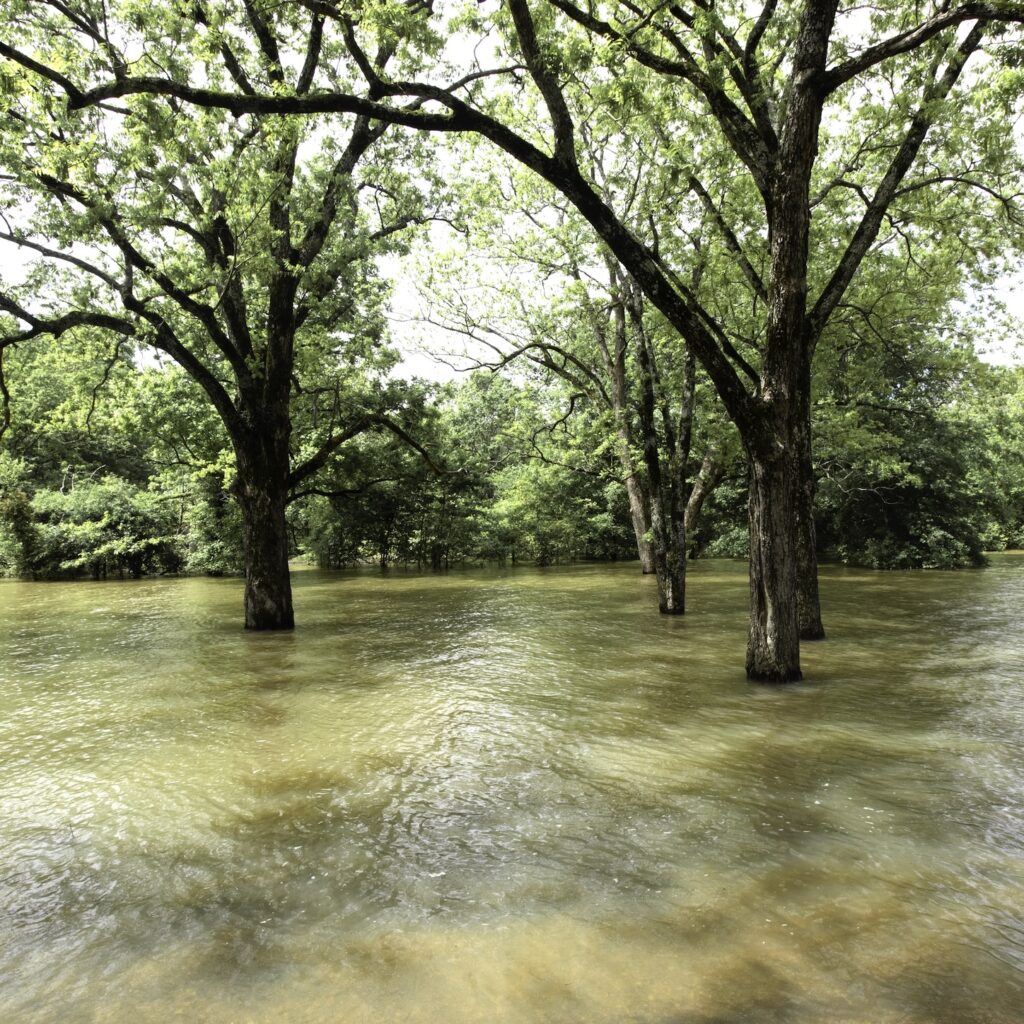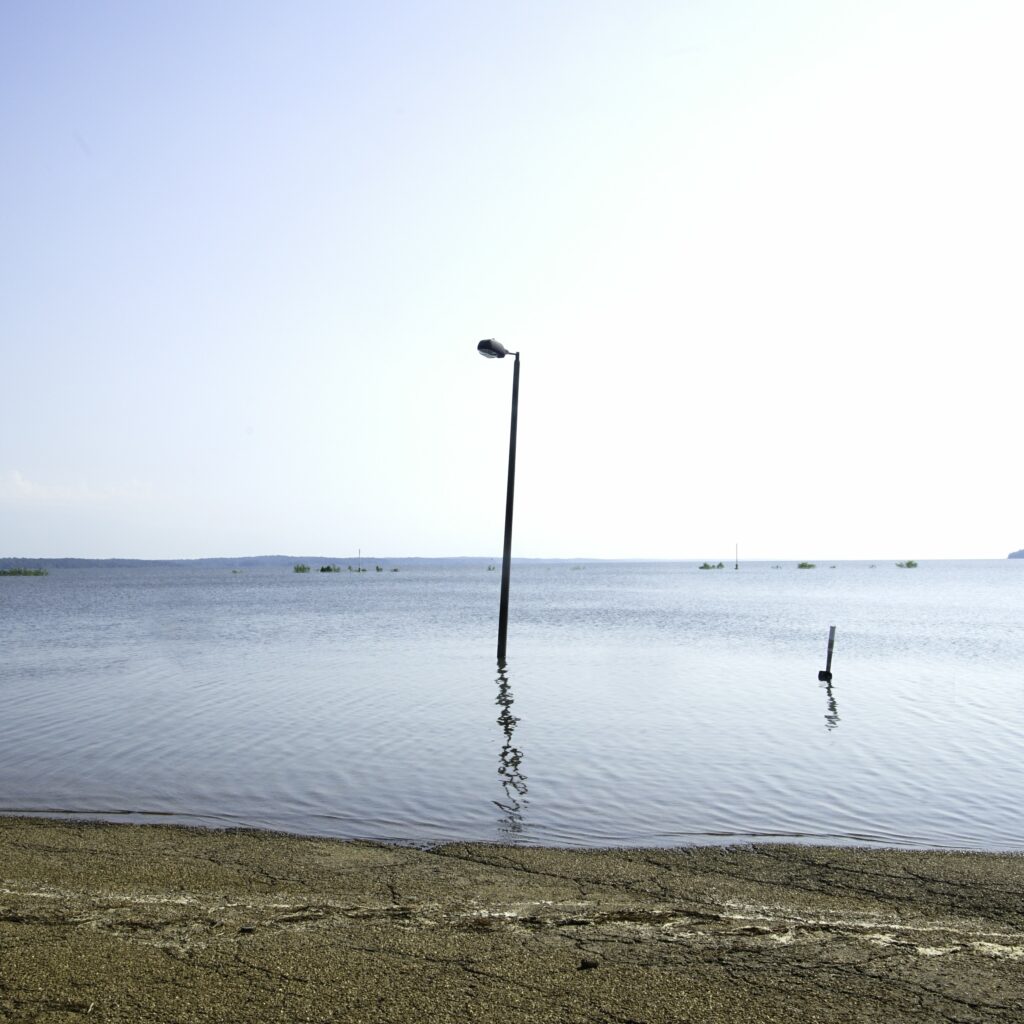Brooke C.White

Au cours de la dernière décennie, alors que les événements météorologiques extrêmes sont devenus trop fréquents à l’échelle mondiale, Brooke C.White a arpenté et travaillé le long des rives du fleuve Mississippi, de ses affluents, de la côte du Golfe, des Caraïbes et du golfe du Maine pour documenter l’évolution des niveaux d’eau dans ces régions.
À la suite de ces observations, un projet photographique intitulé What Water Feels s’est formé ; elle y explore la sublime nature des événements météorologiques extrêmes tout en examinant les effets de l’élévation des eaux sur les communautés vulnérables à travers le sud profond des États-Unis, des Caraïbes et des Maritimes.
L’intersection du lieu, la mémoire et le temps, domine ses démarches artistiques
Son travail explore le paysage en tant qu’espace privé et public, reflétant à la fois les forces internes et externes qui ont un impact sur notre identité et notre connexion au lieu.
Le projet comprend des cyanotypes de durée expérimentale et des photographies documentaires qui portent en elles les concepts entourant une expérience vécue de lieu par rapport à une expérience incarnée. La représentation directe et documentée des eaux montantes mise en contraste avec les cyanotypes expérimentaux et abstraits, offre deux expériences différentes dans le paysage/lieu. L’un est un enregistrement de l’événement, de ce qui advient, de l’inondation et l’autre est une représentation formelle de l’immersion dans les eaux de crue. Chaque cyanotype possède en lui la durée de l’inondation réelle, il sert le souvenir et permet l’enregistrement de cette expérience physique. Le projet se compose actuellement d’impressions numériques grand format, de cyanotypes uniques, de livres d’artistes et de vidéos.
The intersection of place, memory, and time dominates my artistic investigations. I employ a range of photographic approaches ranging from experimental, documentary, portraiture, and video, to investigate topics surrounding, family and loss, identity and nature, and motherhood. My work explores the landscape as both a private and public space, reflecting both the internal and external forces that impact our identity and connection to place. Over the past decade, as extreme weather events have become all too frequent on a global scale, I have been working along the banks of the Mississippi River, its tributaries, the Gulf Coast, Caribbean, and the Gulf of Maine to document the changing water levels within these regions. In the fall of 2022, the lack of water brought me to the edge of the Mississippi River in Rosedale, MS to photograph the extreme draught that halted most of the travel up and down the river thereby delaying the transport of goods. In the summer of 2022, I was in Maine and the Maritimes photographing the impact that increased water levels are having on coastal communities. In 2021, I traveled to south Mississippi to document the development of critical wetlands that protect the people and places of Forest Heights and Turkey Creek, MS. Both communities live along the edge of the Turkey Creek, one of the nation’s Ten Most Endangered Rivers of 2021. Along the Gulf Coast of Louisiana after the BP oil spill and Hurricane Katrina, I found myself photographing the traces left behind in the landscape that reveal the vulnerability of communities on, in, and above the water.
As a result of these observations a photographic project titled What Water Feels has evolved and it explores the sublime nature of extreme weather events by examining the effects that rising waters are having on vulnerable communities throughout the deep southern United States, Caribbean, and the Maritimes. Included in the project are experimental durational cyanotypes and documentary photographs that explore ideas surrounding a lived experience of place versus an embodied one. The direct, documentary representation of rising waters contrasted alongside abstract experimental cyanotypes provides two different experiences of place. One is a record of the flood event and the other is a physical representation of being in flood waters. Each durational cyanotype is made during an actual flood event and serves as a memory and record of that physical experience. The project currently consists of large format digital prints, unique durational cyanotypes, artists books, and videos.
Biography: Brooke C. White was born in 1975, she lives and works in Oxford, MS where she is a practicing artist and educator. She is associate Chair, Professor of Art & Southern Studies, Division Head of Imaging Arts & Print Media, Department of Art & Art History, University of Mississippi. As an artist, Brooke White embraces, a cross-disciplinary approach to image making that combines traditional analog techniques alongside digital strategies. For the past twenty years she has made work about the landscape, nature and our response to place. The conceptual framework of her projects is consistently driven by the politics of place, memory and time, and the role they play in establishing identity.
Exhibitions: The Hammer Museum, the Mississippi Museum, the Ogden Museum of Southern Art. She has been a Senior Fulbright Scholar in India and is the recipient of multiple Mississippi Arts Council Individual Artist Grants. Her work has been published in Aint Bad Magazine and the Oxford American.
Her artworks are collected by: Zines of the Zone, Brest, France. Do Good Fund Collection, Columbus, GA. Transart Institute Berlin and New York. Courtnay Haden, SFMoMA. Casoria Contemporary Art Museum, Naples, Italy. Plugged International Video Art, Dinner Ware Contemporary Gallery, Tucson, AZ. CSU Chico Electronic Arts Library, Chico, CA. Wro Center for Media Art-Wroclaw, Poland. International Ate, Phatspace Gallery, Sydney, Australia. Alfred University-Permanent Collection, Alumni Hall. Mamia Bretesche Collection, Paris, France.

Sardis_flood _Telephone. Brooke C.White . All rights reserved